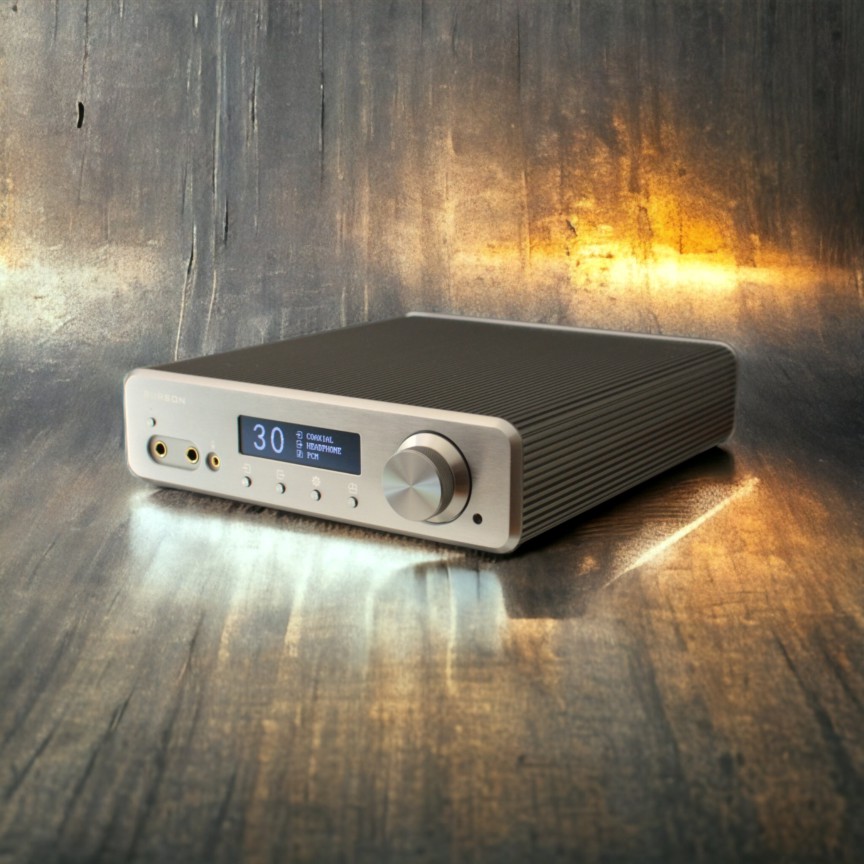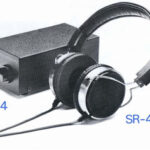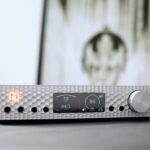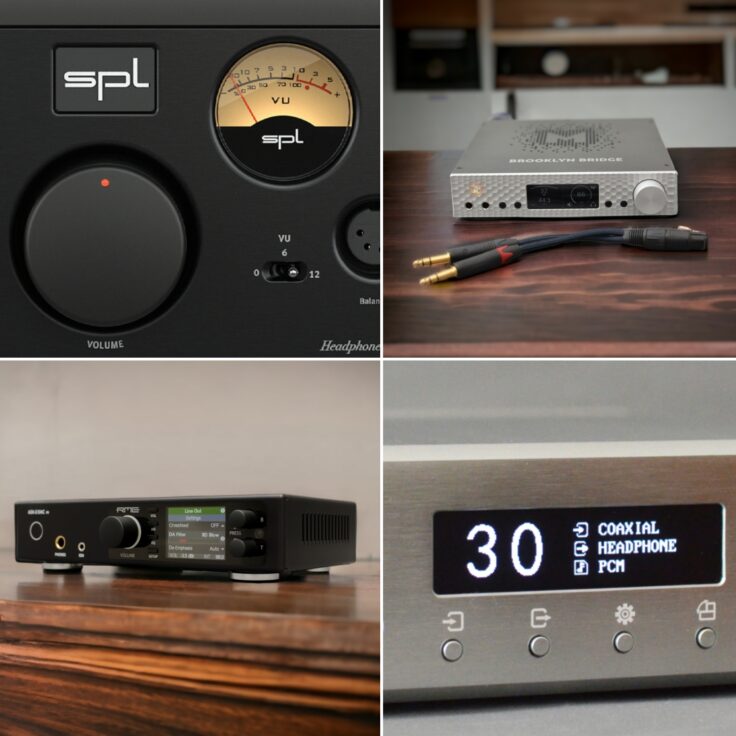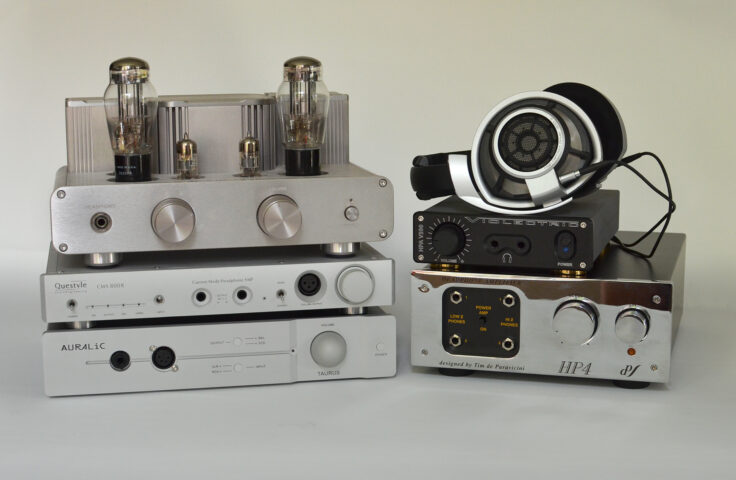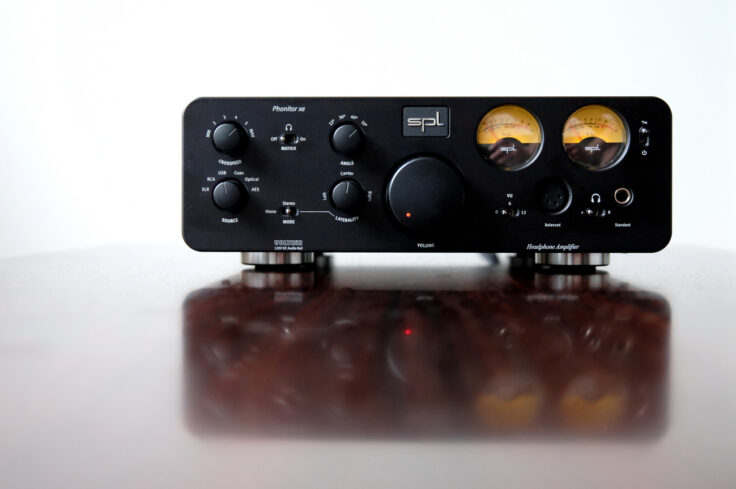The Burson Conductor 3 Reference was the top model at launch in 2019. It’s still going strong. There is also a balanced version of the Conductor 3 Reference available called the Conductor 3X Reference (X is probably for XLR). Burson has launched even more powerful and expensive Conductor versions since then, namely the Conductor 3GT and 3XGT, recognizable on the colourful buttons. Further, there is a less expensive Conductor line, called the Conductor Performance, which you can recognize on the smaller display.
The Conductor 3 Reference has RCA analogue in- and outputs as well as digital inputs. Its amp is based on a class-A design and delivers 7,5 watts @16 ohm. The DAC is built around 2 x Sabre ESS9038 (140dB dynamic range, THD+N (0.0004%), with a dual mono design, with 7 digital filters. You can upgrade the external power supply with the Burson Supercharger or even 3rd party options like the Ferrum Audio Hypsos.
It is in other words a quite versatile package. You can use it as a DAC/amp for headphones, as a preamp for your active speakers or power amplifier, you can use it as a DAC for your integrated amp, as a soundcard for your computer. The analog input even letslet you connect your turntable to it.
I have reviewed the two previous generations of Burson Conductors, and I liked them both. I appreciated the performance, mostly as an amp but also as a DAC. I also liked the design and the simplicity of the user interface.
This page is supported by users when they donate or use affiliate links to shop for anything on Amazon via our link here .
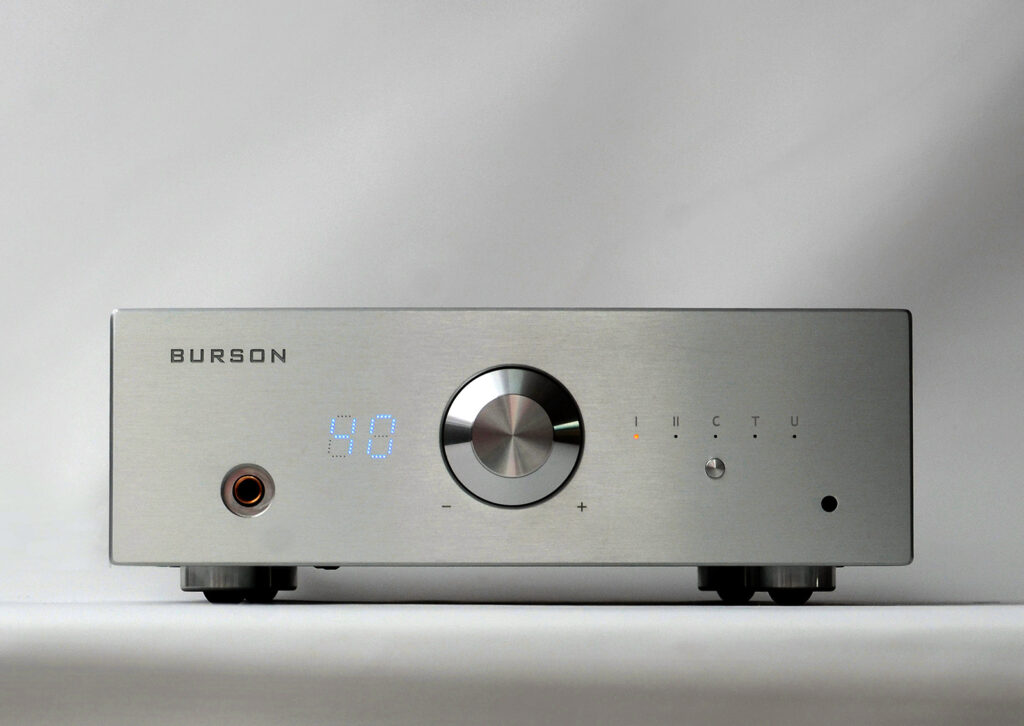
When launched in 2019, the Conductor 3 represented a radical turn in the Burson product line. It was a total refurbishment. The case was new (designed to dissipate heat), they moved the power supply out of the chassis and added a totally new user interface. Instead of the previous models’ buttons and discrete LED lights, the new interface is based around a monochrome OLED display, four buttons and a multi-purpose volume/selector knob. Last, but not least, the Conductor 3 was equipped with a remote control, however due some reason with one button less than the predecessor.
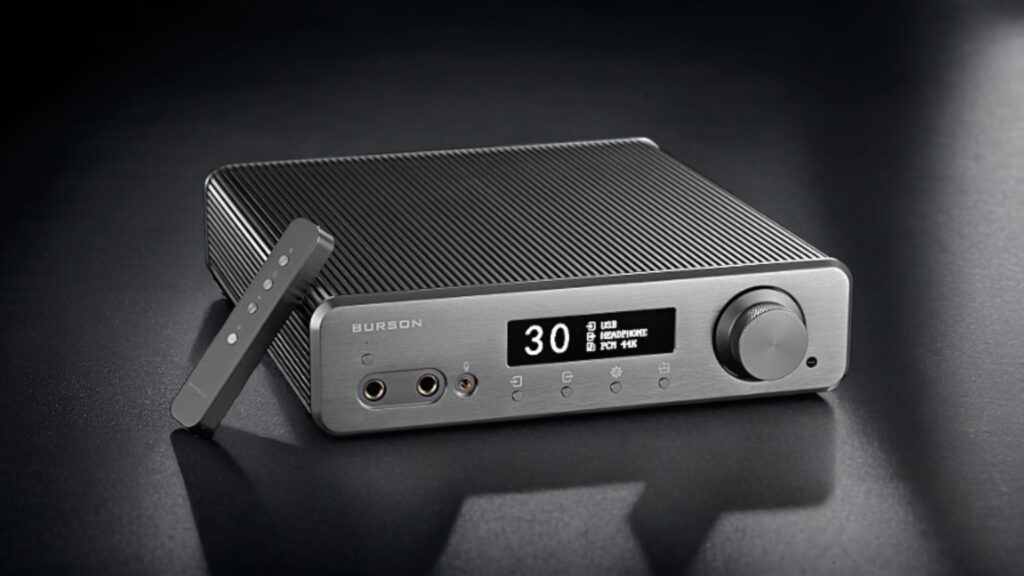
There is some added functionality compared to the previous iterations of the Conductor. However, there are not only advantages to this new interface compared to the old buttons. Frankly, I found the new user interface quite quirky and inefficient. If you don’t change inputs and outputs often it is not a problem. If you do, however, the interface might be a deal-breaker. I’ll elaborate a bit later.
A new feature that sets the Conductor 3 Reference apart from almost all the competition is the mic input. Another nice detail is that you can select to have the Conductor 3 in vertical or horizontal screen mode, if you can find a way to manage the cables.
The amp is as expected pretty great and the DAC section is also very good. The DAC has lots of detail and a nice touch of smoothness, some will call it a bit more musical or euphonic than many of the more clinical and straightforward DAC options available out there.
It is also not only possible but encouraged, to swap op-amps. This way you can fine tune the sound of your Burson Conductor. However, I did not try this during the review so all of this review is based on the stock op-amps.
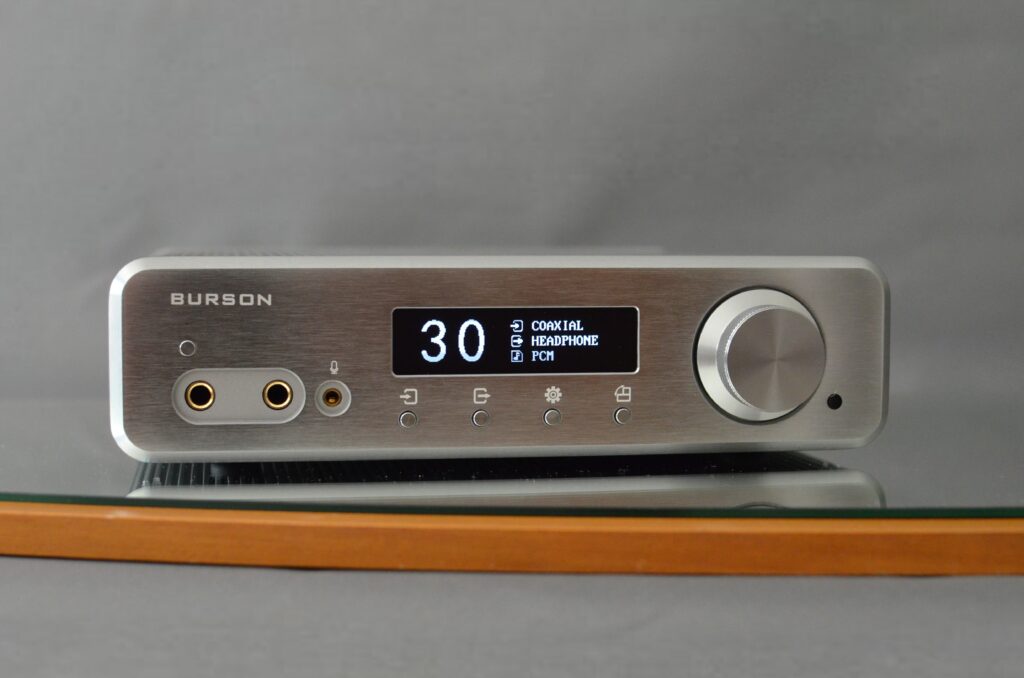
WHAT WE LIKE
- Great sounding headphone amp
- Great sounding DAC and pre-amp
- Remote control
- Op-amp rolling
- DAC filters
- Mic input
WHAT WE DON’T LIKE
- Bad user interface
- Hiss with sensitive headphones, even with low gain
- High gain and low gain are way too different and if you are not careful with which mode you are in, you might blow your headphones (or your ears).
Low gain is only 10% as powerful as high gain, according to Burson.
The user manual can be found here:
https://www.bursonaudio.com/downloads/
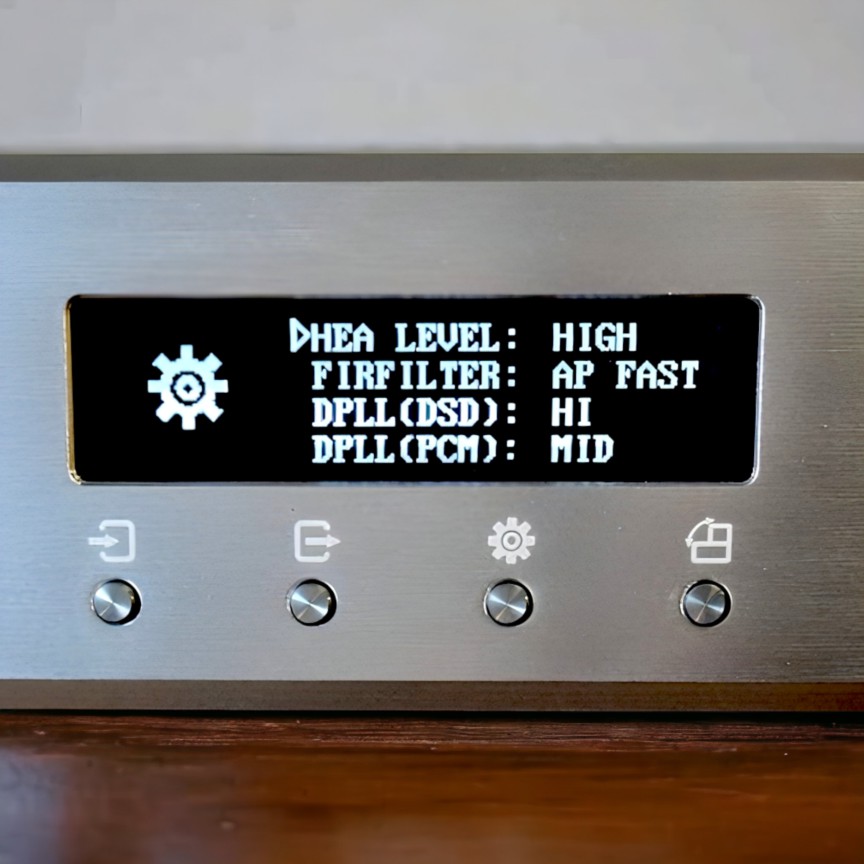
…
SOME COMPLAINTS
First I will say that for many users the following complaints will not be relevant, e.g. if you primarily use your Conductor as a DAC/amp for headphones with not too different sensitivity and a single source.
Second, I want to say that the Burson Conductor 3 Reference is a superb sounding DAC/amp. Nonetheless are there some things that keeps me from being extremely enthusiastic about it without any reservation. I like the way it sounds but there are some things that I really must get out of the way before elaborating on the good stuff. This might be minor issues for many users but for others it could be a deal-breaker.
USER INTERFACE
As mentioned: The user interface is frankly put quirky. I simply cannot understand how Burson managed to come up with this interface in such an otherwise good product. I really miss the old Conductors with their elegant, simple, efficient and intuitive buttons. No need for a screen or a menu.
The new menu system is not intuitive and definitely takes some getting used to.
First, here is a description of the interface:
On the unit, there is a display with four buttons beneath. Input, output, settings and display direction (vertical or horizontal). Then there is the volume knob which doubles as a selection wheel. It must be pushed to select items in the menu. It doubles as a mute button. The remote control has volume up, down, mute and input cycle only.
When you select output, you must push the dedicated output button, select with the volume wheel and click it. It’s the same with input: Press the dedicated input button, rotate the wheel to select, and press the wheel to confirm.
The gain is hiding in the settings menu. If you want to change the gain you must click on the settings button and use the wheel to select it in the menu. I it’s oddly named “HEA” in the menu, luckily it’s on the top.
Even though the manual says now that there is three gain settings, which would have been really nice, Burson told me in 2023 that it was a typo. There are only two gain steps/power output levels.
Why Burson chose to use precious button real estate for a dedicated button to alter something you probably do once, namely select a vertical or horizontal display is totally beyond me. That button should have been used for something more important, e.g. gain selection.
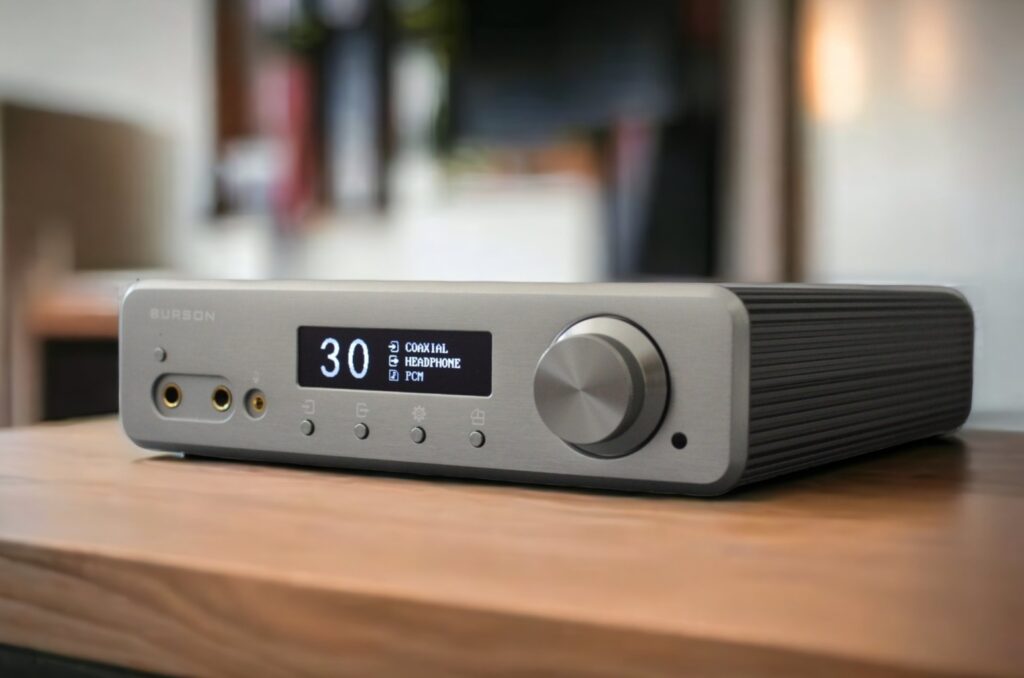
All that being said, here are some of my (further) complaints:
- The volume knob doubles as a selector wheel and it’s very sensitive, making it hard to navigate the menus.
- You have to manually select output. Only one output is active at a time. There is no way to have the headphones connect on “auto” when plugging it in. Since you need to manually select output with the quirky interface, going from loudspeakers to headphones is not as simple as I’d want from an “all in one” headphone amp/DAC/preamp
- When you alternate between the variable DAC output and the headphone output, the Conductor will not remember the volume level you had on the respective output.
- The same thing with the fixed line output – volume is not remembered so that you have to adjust it when switching back from the line out to headphones.
- The difference in gain between the high and low power output modes is also extremely high (low gain is 10% of high) and there is no security mechanism to save your ears when you switch from low to high and forget to adjust the volume 15 rounds down. My RME ADI-2 DAC FS fades the volume in, which gives you time to correct the volume or unplug the headphones.
- There are too many steps on the volume control. It takes too much wheel turning to adjust the volume.
REMOTE CONTROL
The Remote has volume up, down, mute and input cycle. I miss at least an output cycle button. I would much prefer that it had a remote control with well thought out direct selection buttons. Direct selection of inputs, direct selection of output, cycle filters etc – much like the RME ADI-2 DAC FS. With such a remote control many of my complaints would be less relevant. The RME ADI-2 DAC FS has a complicated menu system, but because of the remote control, it doesn’t matter that much.
ISSUES WITH THE BURSON VOLUME CONTROL AND POWER/GAIN LEVELS
During my comparisons, I stumbled upon some issues that I want to elaborate on and my comparison with the Mytek Bridge was a good opportunity to do so. The actual comparison with regards to sound quality will come later, but here are my complaints:
With the quite sensitive Audeze LCD-X, the Burson gives me an unpleasant experience, and it is not the first time. When I unplug the LCD-3, I turn down the volume from “60” to around 40, preparing for the more sensitive LCD-X. However, I forget to switch to “low power mode”, and the volume is deafening when I plug in the LCD-X and start the music. With the Mytek, the listening level is around 60 with the LCD-3 and 10-15 steps lower with the LCD-X. No “Low/High” power modes are necessary. And it is not like I feel the need for finer steps with the Mytek.
With the Sennheiser HD 800, I can choose to play at 79 with the low gain/power mode or 33 with the high power mode. With the Shure SRH1840 I can choose between volume level 01 or 40 on the Burson. Mytek is at 60. With the Beyerdynamic T1mk2 the volume is 70 or 20 on the Burson. Mytek is at 67.
Again, I do wish that there was some sort of safety mechanism for when you switch between the high and low power modes. Also, because it takes forever to turn the volume significantly down. You have to rotate it so many times that it feels more like spinning a wheel of fortune than a volume control. I miss the good old pot. A solid old fashion analogue volume knob.
FRIENDLY UI SUGGESTIONS TO BURSON
Ok, Chris, you might think. That was a lot of complaining but do you have a better solution?
Actually I think I do, and I believe it’s mostly about software changes:
- First, I think that the dedicated buttons for input and output should rotate inputs and outputs by just pushing that single button.
- Second, I think there should be a dedicated button (use the display mode button) for gain control. For safety I think that it might better be operated with a push on the dedicated button and then a selection with the selection wheel.
- Third, I would program the volume control so that it adjusts in big steps when you turn it fast and in small steps when you turn it slow. My RME ADI-2 DAC FS does that in an excellent way.
- The volume/selector wheel could also be programmed to be less sensitive in “menu mode”, let’s say you set it for two or three steps necessary to go up and down in the menu instead of just one.
- Fourth, there could be an option to have all outputs hot/active at the same time, and another option to select for automatic mute DAC and PRE out when you plug in headphones.
- Fifth, the remote control could have a lot more dedicated buttons and rather be made of plastic. Volume up, down, mute, direct selection buttons for inputs, direct selection buttons for outputs, digital filter rotation button. Again, I recommend Burson to be inspired by the RME ADI-2 DAC FS remote.
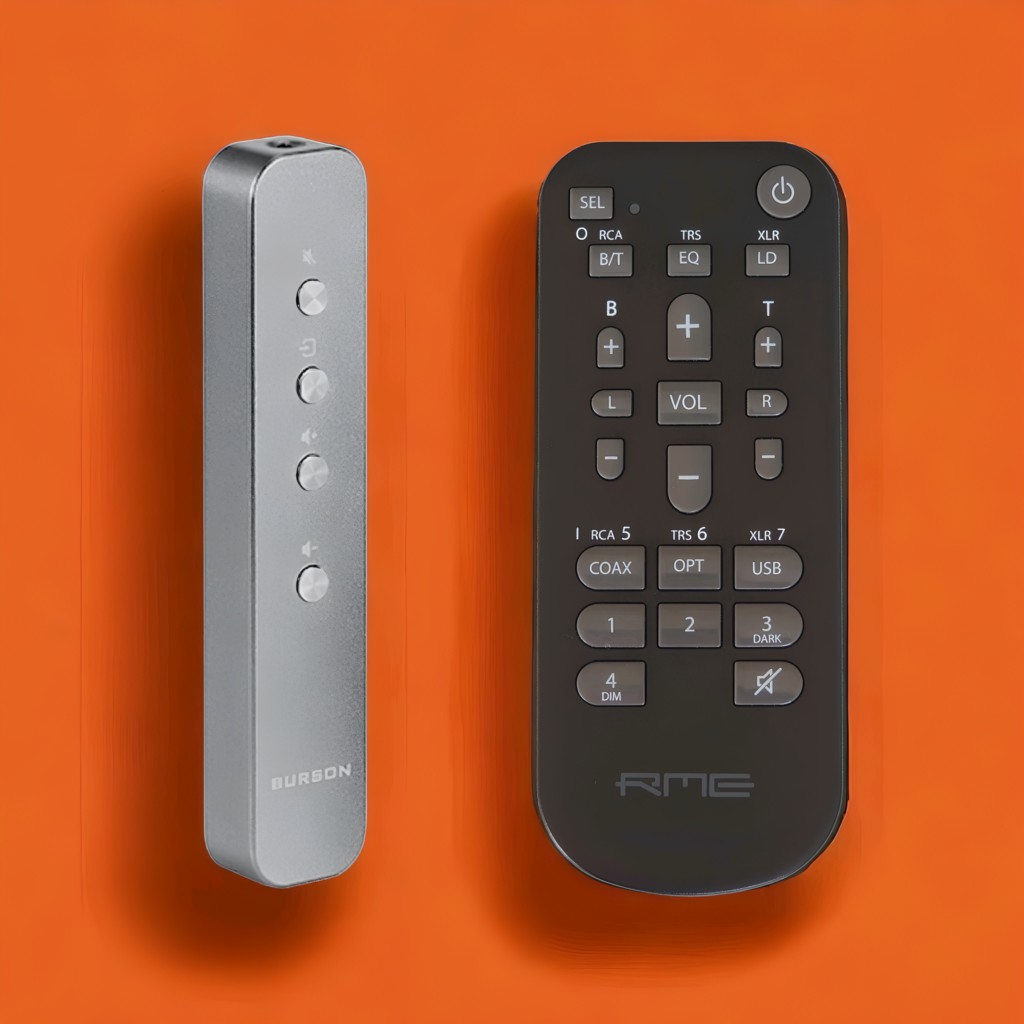
All that being said, it is now time to move on to the good part. I hope to have made clear what i find to be the shortcomings and quirks of the user interface. However, the Burson Conductor 3 series remain quite successful. For some it doesn’t matter and they will find that it is the best option still. Because, let’s face it, most swiss army knife DAC/amps have less than optimal user interface.
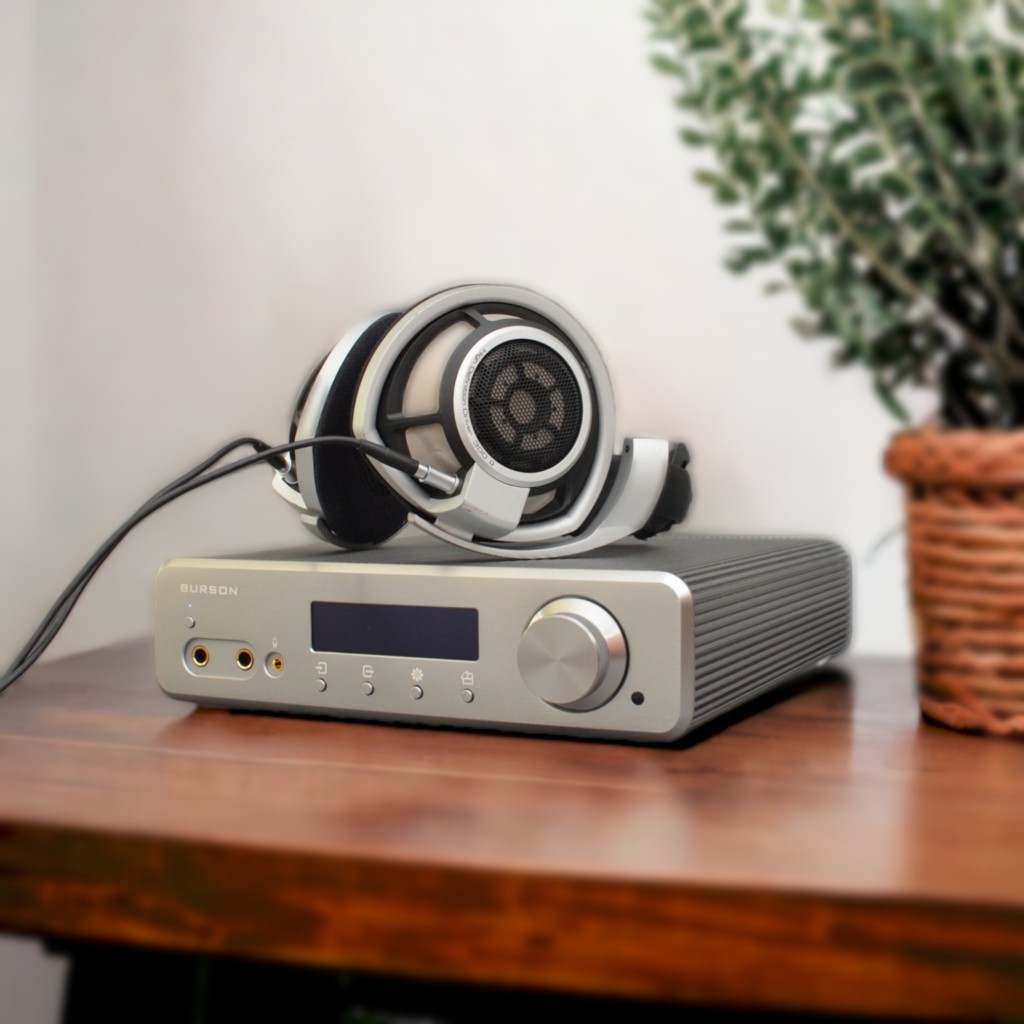
HEADPHONE AMPLIFIER PERFORMANCE
Even though it has a great DAC, first and foremost, the Burson Conductor 3 Reference is a headphone amplifier. Let’s test it against some classic high performers.
Auralic Taurus vs Burson Conductor 3 Reference
Since the DAC on the Burson is muted when using grains, I used the Mytek Bridge as a source for the Taurus
With the Hifiman HE1000v2, the Taurus is slightly snappier. Both do a good job and the Burson does Indeed sound very nice. With the HD800, the Tarusu has a bit tighter sound, but also a bit drier. I really like the sweeter sound of the Burson, and prefer it even though the Taurus feels a bit snappier.
With the Audeze LCD-3, The Taurus also feels a bit snappier, but you lose some of that organic tone and natural voicing of the Burson.
The Taurus is the amp that made me buy the SRH-1840. However, there is no doubt that I prefer Burson. It has that slight sweetness that makes some instruments shine and glow a little bit more.
The Taurus is a bit dry and sometimes quite hard sounding with the Beyerdynamic T1. I definitely prefer the Burson, it has a slightly softer, but more importantly a more liquid and appealing presentation.
Violectric V200 vs Burson Conductor 3 Reference
Listening to Erlend Dalen clocks, on the Sennheiser HD800 I do find that the clocks have a more natural ring to them. The electric guitar on Jakob Brio Trio´s “So In Love” is warmer and feels more glowing. Both are good amps, but I generally prefer the Burson.
The Burson and the V200 both handle the Hifiman HE1000v2 quite well, but slightly differently. The V200 has a sound signature that sometimes can be described as more polite, and other times a little flat. It is never quite obvious to me how it will play out. Even though I hear the same differences in the sound signature as with the HD800, I somehow now find the V200 to play the HE1000v2 just as well as the Burson. They are equally good but in slightly different ways.
The Focal Elear feels a bit better with the Burson than the V200, but they are very close. Both do a good job.
Moving on to the Audeze LCD-X, the Burson has more midrange energy. The silky vocal of Susan Wong is more pronounced and a bit upfront.
In conclusion, I find that the Conductor 3R really holds up well against two highly regarded dedicated headphone amplifiers. The Conductor is slightly on the warm and smooth side, but just slightly.
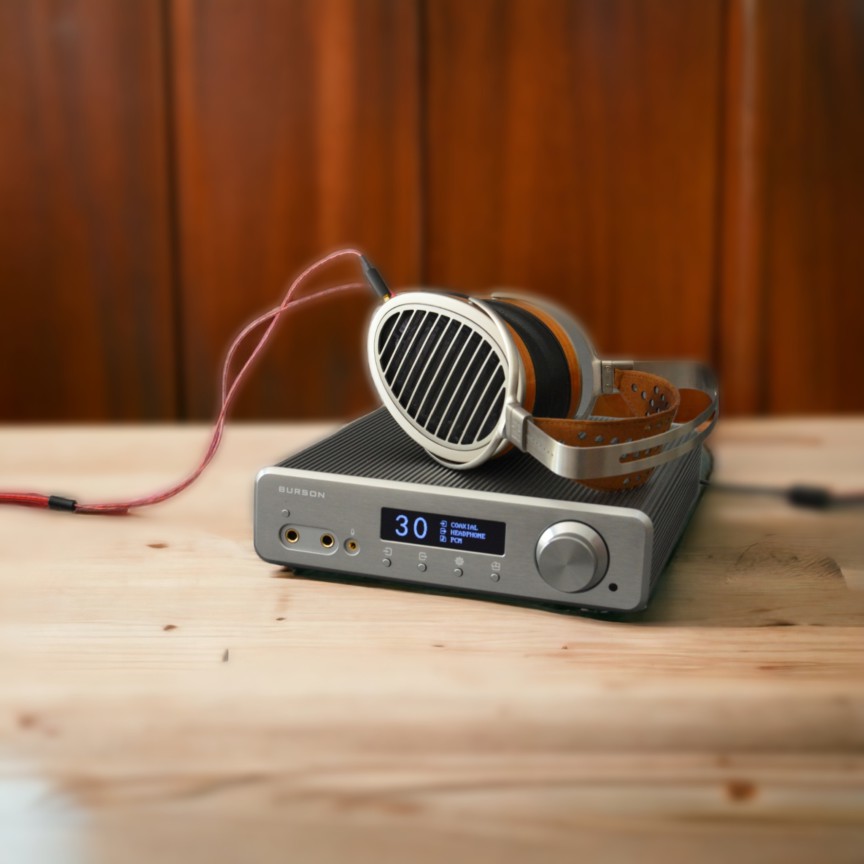
DAC/AMPLIFIER
I often tend to think about DAC/amps as either a DAC with an amplifier or an amplifier with a DAC. However in the recent years there have been so many good products that have both a good DAC and a good amplifier that you really have a good selection.
Below I will compare the Conductor 3R to three very good alternatives. The RME ADI-2 DAC FS, the Mytek Bridge and the Phonitor xe. If I should use my old definitions I would say that the RME and the Mytek are DACs with amps, whilst the Burson and the Phonitor are amplifiers with a good DAC.
BURSON CONDUCTOR 3 R vs RME ADI-2 DAC FS
Internal DACs
Although both are pretty good with the Sennheiser HD800, I find the Burson a bit more well-rounded and spacious and slightly more organic sounding. In Cohen’s “What Happens to the Heart”, the small background sounds stand out just a little bit more, and there is a bit more fine detail (plankton). The difference is there, but not huge.
Also with the Audeze LCD-3 the Burson is smoother, more spacious and natural sounding. The RME is ok, but it’s not as delicious. Using the Shure SRH-1840, both sound great and clean, punchy and energetic. What sets them most apart is that little extra sweetness of the Burson, that extra hint of that golden tone with violins and electric jazz guitars.
The RME has the power to drive the Hifiman HE-1000 but not with the refinement of the Burson
With the Beyerdynamic T1, the RME gets quite on the dry side. The Burson has a warmer and more liquid presentation.
In conclusion, to me the Burson Conductor is a better headphone DAC/amp than the RME ADI-2 DAC FS. It is a bit warmer and smoother and has overall a better sense of refinement.
BURSON CONDUCTOR 3 R vs MYTEK BRIDGE
ROUND ONE: USING WITH THE INTERNAL DACs
With LCD-3 the Burson is slightly more rounded and organic and natural sounding even though the Mytek really does a good job. Switching over to the HD800, it becomes apparent that although they often sound quite similar, the Burson does indeed have a sweeter tonality, with electric jazz guitars and such, it has a better ability to convey that tubey glow. Moving on to the SRH-1840, the difference remains the same. Both drive these headphones very well, but the Burson has that slight extra glow.
The HE-1000 sounds smoother, more organic and refined with the Burson. The Bridge is very good, it’s dynamic and spacious but feels a bit drier. It’s a matter of preference, maybe.
With the Beyerdynamic T1, I find the Burson a bit more pleasing. Both drive these headphones well, but the extra bit of sweetness from the Burson does the T1 well.
Starting out with the Grand Central by Thomas Stanko on the Focal Elear (unbalanced), I feel that the Burson is a bit more alive. The trumpet is slightly more organic, the percussion stands out a boy more. Simply put the Mytek seems to be a little bit flatter sounding with the Elear. It’s still good, the Burson is just a bit better.
The LCD-X is good on both, but I tend to find the Burson a tad more organic sounding.
Finally, the Oppo PM1 (balanced) sounds delicious with the Burson. Erland Dahlen’s “Clocks” is powerful, smooth, lively and inviting. The bass is solid, the clockworks are very natural sounding. In direct comparison, there is a little something lost when moving over to the Mytek. It sounds good by itself, but in direct comparison, the music becomes flatter sounding. The clockwork is less alive. To quote Currawong: “Comparison is evil”. This impression remains the same with other songs. The Mytek is totally enjoyable by itself, but the Burson is my favourite.
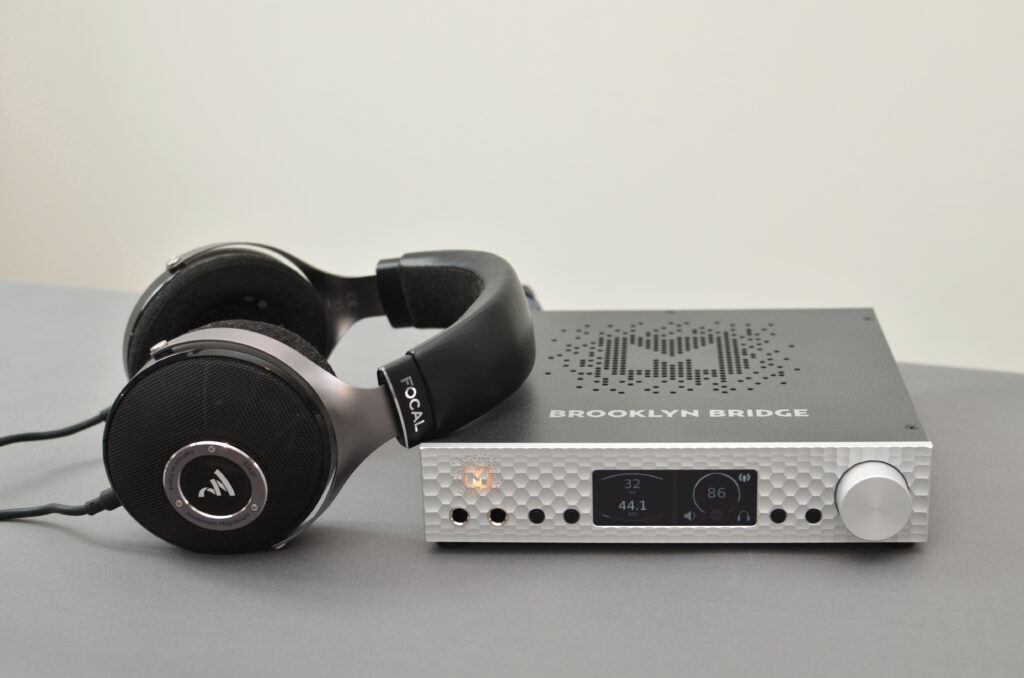
ROUND TWO: BURSON CONDUCTOR 3 VS MYTEK BRIDGE WITH MYTEK BRIDGE DAC AS SOURCE FOR BOTH
First I tried the Fostex TH900. It is simply too sensitive and the Burson simply has too much background noise.
Moving on to the quite sensitive but still less sensitive Oppo PM-1, things get tolerable even though the Burson still has some background hiss. It doesn’t matter if I have it set to low or high headphone output level (gain). The two modes have quite a big difference in normal listening volume for me with the high setting and an Oppo PM1 is “01”. The lowest possible level. With the low power setting my volume is around 45.
With the Mytek Bridge in balanced mode there also is some background hiss but it is tolerable.
That being said, although they seem pretty equal in terms of detail retrieval and other parameters, I prefer the Burson for its slightly warmer presentation.
Moving on to the Hifiman HE1000v2 they perform quite on the same level the Mytek is slightly dryer sounding and I must admit I like the slightly warmer presentation of the Burson. I feel the detail level is almost better with the Burson too. It is generally a more balanced presentation.
With the Sennheiser HD700, I again find myself at the very low volume setting with the Burson in high power mode at “04”. Both the Mytek and the Burson have a slight background noise, but I can easily live with it. I tend to prefer the Mytek this time, for a change the Mytek feels warmer sounding. It feels more well-balanced and coherent.
Both do a terrific job with the Audeze LCD-3. They present a tight and spacious yet organic and natural sound. I find the Burson to be slightly warmer and fuller sounding, but the difference is really negligible.
Both amps sound good with the Audeze LCD-X, although they both have some low-level background hiss.
With the Beyerdynamic T1 v2, they are both capable, but again, the Burson´s extra hint of warmth is making it a bit more delightful.
With the Shure SRH1840, both do a great job, but again, the Burson is a tad more seducing.
I didn’t find that the DAC used mattered much. The amps are much more important, and the DACs are too close to make or break a good amp/headphone match.
CONCLUSION
Both the Mytek and the Burson are snappy and full of punch and detail. The Burson is, however, sweeter sounding and has a more pleasant tone, the Mytek is a bit drier and crisper. Some might say that the Mytek is a tad more revealing, but I prefer the Burson.
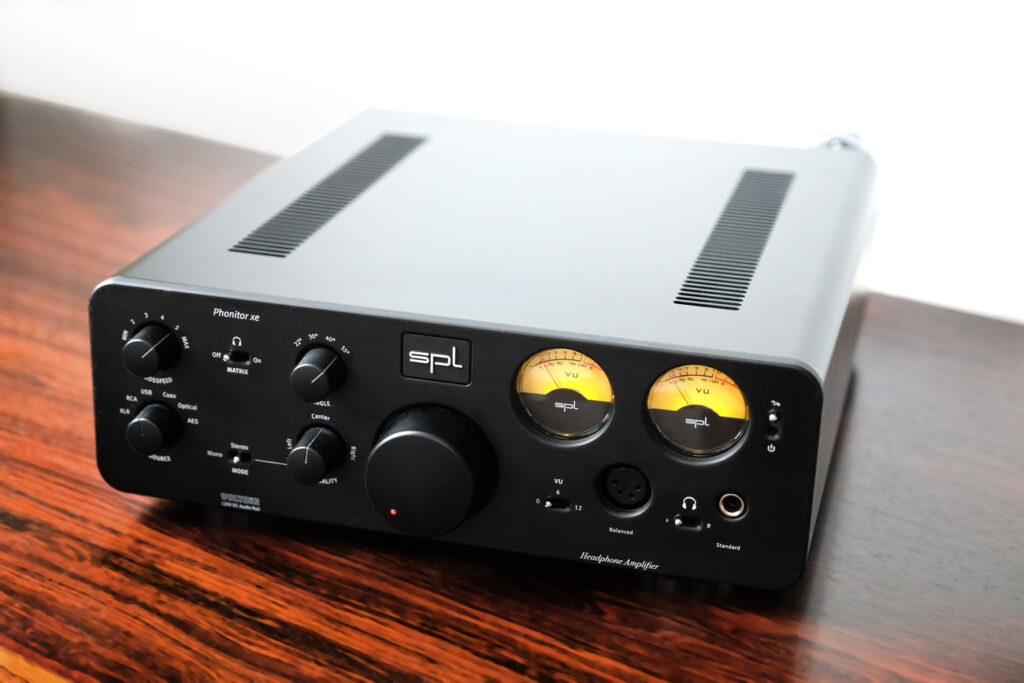
Phonitor xe vs Burson Conductor 3R
In this comparison, I use the Internal DACs of both units. The Conductor 3R has an unbalanced output only, but I compare it to both the outputs of the Phonitor.
Sennheiser HD800 Unbalanced, they are very similar, but the Phonitor is slightly more present in the midrange. The Burson might have the best bass performance and offers a slightly more open soundstage, maybe a bit more refined sounding. With the Phonitor balanced, it tightens up slightly and feels more transparent, still retaining that extra midrange presence. Basically, in unbalanced mode, they perform very evenly, but when using the XLR output, the Phonitor is the better amp.
Beyerdynamic T1 With the balanced output, the Phonitor is the better sounding with the T1. The Burson gets a tad dry sounding, not as open, detailed, and organic. It is good, but the Phonitor is better. Moving over to the less powerful unbalanced output of the Phonitor, it evens out.
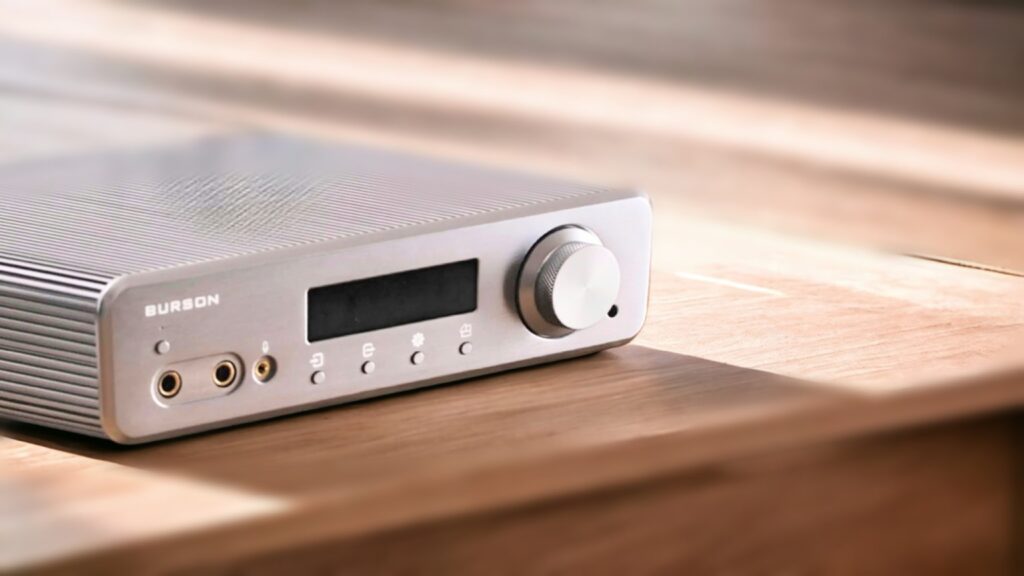
Shure SRH-1840 The Phonitor is an excellent match for the SRH-1840. With its balanced output, it clearly gets the upper hand due to better dynamics, clarity, and precision. Going unbalanced, they get a lot more even.
Hifiman HE1000 mk2 Both sound good, but it must be said that few amps do these headphones full justice, and the balanced outputs of the Phonitor are closer to releasing the HE1000´s full potential than the Burson. Unbalanced, they are on a similar level, but going balanced, the Phonitor definitely gets closer to showing what these headphones can do when properly matched.
LCD-3 Both amps are great. Compared to the Phonitor’s unbalanced output, I prefer the Burson. It’s slightly tighter, clearer, and crisper. Using the balanced XLR output of the Phonitor, however, the table flips, and the Phonitor gets slightly tighter and offers a bit more headroom than the Burson.
Fostex TH-900 (unbalanced only) The Burson, even in low power mode, is simply too noisy for these extremely sensitive (for full-size) headphones. The Phonitor is so quiet even in High Power mode that I don’t even bother to try it in low mode, at least for now – given the extremely awkwardly positioned switch.
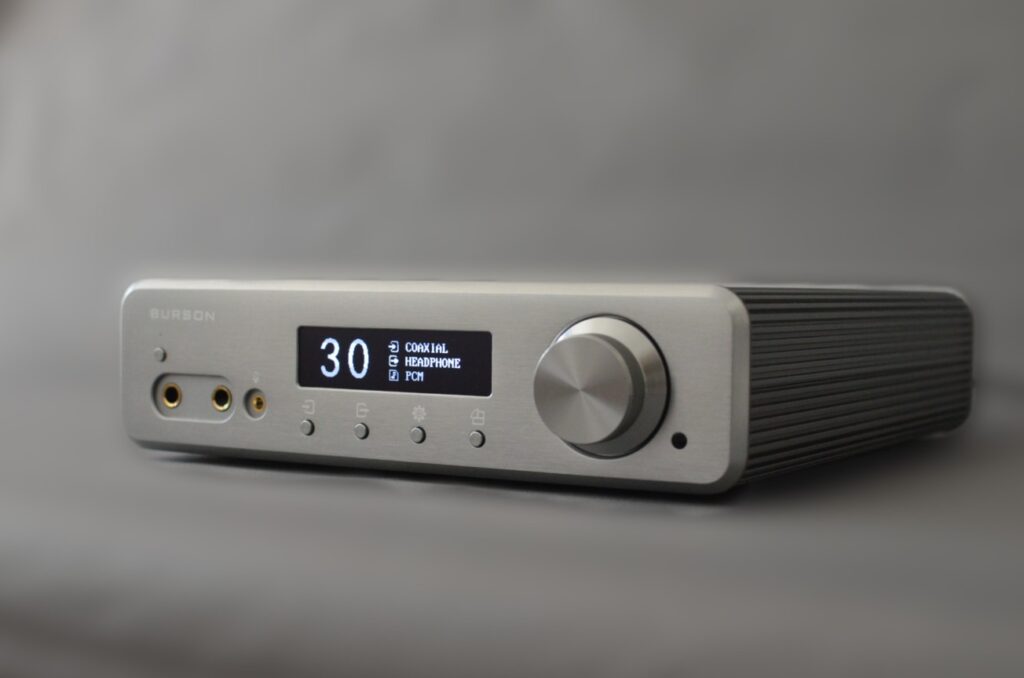
Hifiman HE-6 Even though the extremely hard-to-drive HE-6 is somewhat of a curiosity, it is always interesting to see how an amplifier handles them. Both these amps handle the HE-6 totally acceptably. These have enough power to make the HE-6 sound good. However, neither quite matches the level of dynamics and PRaT you can get with a good speaker amp. They are in the same territory as the standard edition Audio-gd Master 9, which I consider the reference for “acceptable” performance. The Phonitor has a bit more headroom and dynamics than the Burson.
Audeze LCD-X and Focal Elear (unbalanced only) The Phonitor has a slightly meatier presentation, and to me, it sounds delicious. The Conductor is not sterile or clinical by any means but feels a bit more polite. It has great detail and spaciousness but not the same grunty feeling.
Concluding, both these amps are great. With the unbalanced outputs, it is often a toss-up. The Phonitor is a bit fuller and meatier sounding, the Burson a bit more refined and polite. Going balanced, however, the Phonitor clears up and generally offers more dynamics and clarity – while still retaining a hint of that “meat to the bone” fullness.
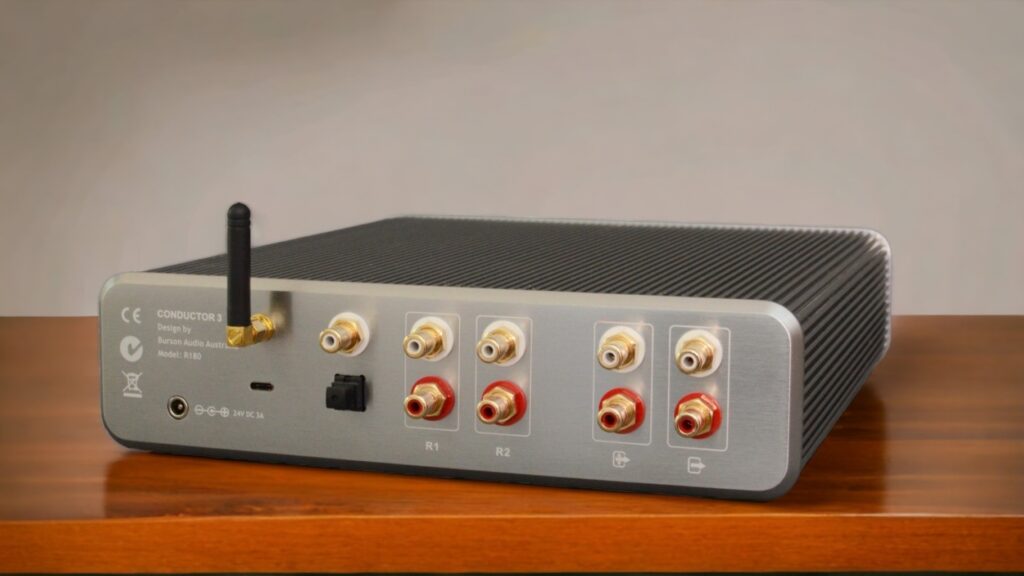
DAC / PRE SECTION
Here’s what Burson says about the DAC in the Conductor 3 Reference:
“The SABRE32/ESS9038Q2M DAC and XMOS USB receiver chips are the most advanced and expensive in the industry. There are two ESS9038 DAC chips in our C3 Reference and its USB receiver comes with a customised driver by Thesycon, Germany. The result is unsurpassed processing power, perfectly playing back DSD512 and 32bit/768khz audio.
The C3X Reference also features a Bluetooth 5.0 receiver Qualcomm/CSR8675 [+] with an aptX HD audio & LDAC codec. It pushes Bluetooth playback beyond CD quality and ease of use to the highest level. “
COMPARING DACs
BURSON CONDUCTOR 3 REFERENCE VS MYTEK BRIDGE AND THE RME ADI-2 DAC FS
When I hooked up the Mytek Bridge, the RME ADI-2 DAC and the Burson Conductor 3R to my STAX SRM-007tII amp and the SR-009 high-end electrostatic headphones, I was a bit disappointed. Not because any of the DACs sounded bad, but because it was really hard to tell them apart – even on such a resolving headphone setup. For most listeners, if it is good enough for STAX, it will be more than good enough for any other purpose.
When I compare the Burson to the Mytek on the STAX setup there certainly is more air and tiny detail with the Mytek. With Susan Wong’s voice, there is a bit more texture and fine nuance with the Mytek.
Comparing the Burson to the RME ADI-2 DAC, the difference is smaller and it fits somewhere in between. But again the difference even with my Stax SR-009 is not very big, and for the most part, The extra resolution will be wasted.
I tried using the Mytek as a DAC for the Burson and even though there might be a tiny difference in resolution with the Hifiman HE1000, I really must say that I find the built-in DAC of the Burson quite satisfactory and can not see many people feeling that they need to upgrade the Burson with external DAC.
I conclude that DACs are becoming too good these days for reviews to be any fun. For audio enthusiasts, it is a blessing, though. Most of us want a good, neutral source.
DAC FILTERS
The Conductor 3 Reference has 7 DAC filters.
There are subtle changes to the sound with different filters, but I could not test them all in-depth and mostly stuck with the standard AP FAST / LP FAST. However, with bright-sounding headphones like the Beyerdynamic T1, it was preferable to choose a filter like MP SLOW.
It is very nice to have the opportunity to fine-tune the sound depending on your preferences and your headphones.
Such filters might give more effect on speakers when the room acoustics will influence the sound and increase differences.
The filters are built into the ESS9038 DAC chip.
Burson says: “For details on the various filter setting please refer to the official datasheet of the ESS9038 DAC:”
There it says that filter selection determines the “…type of filter to use during the 8x FIR interpolation phase”
Here are the DAC chip filters listed:
- Brick wall filter
- Corrected minimum phase fast roll-off filter
- Reserved
- Apodizing fast roll-off filter (default)
- Minimum phase slow roll-off filter
- Minimum phase fast roll-off filter
- Linear phase slow roll-off filter
- Linear phase fast roll-off filter
PREAMPLIFIER
I test the pre-amplifier output in a very simple way with my Stax amp. Using the Burson as a pre-amplifier in other words volume control of the Burson while setting the STAX pot to maximum, there is definitely not any loss compared to using the pot of the Stax. I think I actually prefer using the volume control of the Burson Conductor 3R. I have read several places that the gain selection actually affects the preamplifier output as well as the headphone output but I did not test that myself.
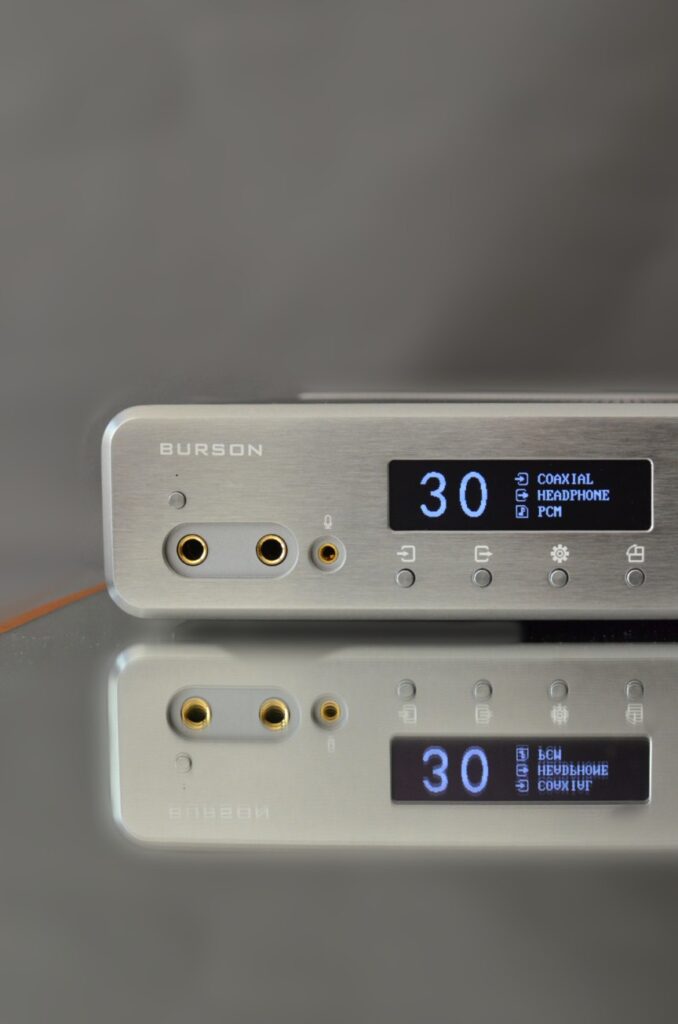
CONCLUSION
There are many good things to say about the Burson Conductor 3 Reference. It is, however, not perfect. I have elaborated on my complaints about the user interface. There is also the high noise floor which results in hiss with some low sensitivity headphones. However, if you can live with its quirks, it has a lot to offer.
The Conductor 3 Reference offers a great, detailed and slightly sweet sounding DAC as well a superb sounding and powerful headphone amplifier with a hint of warmth. It has both digital and analogue inputs. It has line level and volume controlled outputs, along with dual headphone outputs. In addition you get a remote control and a mic input. This package will certainly make it appealing to many users.
Check out Burson Audio on Amazon here
Any purchase you make on Amazon or Linsoul with any of our affiliate links will give us a small provision at no cost to you.
We only get a provision for items that are not returned, so there’s no incentive for us to recommend something that’s not good.
Linsoul : Headphones, Earbuds, Wireless Earbuds, Desktop DAC/AMP, Portable DAC/AMP, Digital Audio Players,
Amazon: Headphones, IEMs, Headphone Amplifiers, Home Audio or Anything else.
.
If you enjoyed this article or other content on The Headphoneer, you might consider leaving a small donation to keep this website up and running. No donation is too small. Thanks for supporting us!
If you like our work please follow us on Instagram, Facebook and Twitter , it will help us grow. Sharing is caring 🙂
Technical characteristics
| SPECIFICATIONS | |
|---|---|
| Product type | DAC Headphone amplifier Preamplifier |
| DAC Chips | 2x ES9038Q2M |
| Amplifier type | Class A |
| Bluetooth Chip | Qualcomm CSR8675 |
| Inputs | Bluetooth 5.0 2x Line level stereo RCA 1x USB 1x Optical Toslink |
| Outputs | 1x Pre-Out stereo RCA 1x DAC Out stereo RCA 2x Jack 6.35mm headphone outputs |
| Input impedance | 40kΩ |
| Frequency response | 0Hz – 58kHz ±1dB |
| THD | < 0.0015% |
| Output impedance | Headphone amplifier : 0.5Ω Pre Out : 1Ω DAC Out : 25Ω |
| Headphone amplifier power output | 7.5W @ 16Ω 5W @ 32Ω 1.75W @ 100Ω 1.16W @ 150Ω 0.58W @ 300Ω |
| Channel separation (DAC) | 142dB @ 1kHz 135dB @ 20kHz |
| THD+N (DAC) | 0.0005% @ 1kHz, 0dBFS |
| Supported sampling rates | USB : PCM up to 32bit 768kHz, Native DSD up to DSD512, DSD DoP up to DoP512 SPDIF : PCM up to 24bit 192kHz |
| GENERAL | |
|---|---|
| Dimensions | 255 x 270 x 70mm |
| Color | Silver |
| Weight | 5kg |
| Package | 1x Burson Audio Conductor 3 Reference 1x USB Cable 1x RCA Cable 1x Power supply |
Manufacturer info:
https://www.bursonaudio.com/products/conductor-3/
User Manual:
https://drive.google.com/file/d/1pnUazwaSlhjrVwr7rQaWkQzAZKRVZ1P_/view?usp=drive_web
Info on filters and DAC chip white paper:


